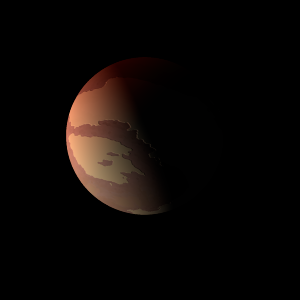|
|
Space Astro
|
Info for exoplanet "Kedilkal"
| Scientific (actual) data |
|---|
| Name | Kepler-1082 b |
| Planet status | Confirmed |
| Radius | 0.1 |
| Orbital period | 1.54321 |
| Discovered | 2016 |
| Updated | 2021-02-05 |
| Tconj | 2454960 |
| Publication | Announced on a website |
| Detection type | Primary Transit |
| Alternate names | 2MASS J19172608+5035545 b, K02072.01, KIC 12058147 b, KOI-2072 b, KOI-2072.01, WISE J191726.08+503554.4 b |
| Star name | Kepler-1082 |
| Right ascension | 289.36° |
| Declination | 50.6° |
| Mag j | 12.331 |
| Mag h | 11.988 |
| Mag k | 11.97 |
| Star distance | 628 |
| Star metallicity | -0.06 |
| Star mass | 1.03 |
| Star radius | 1.14 |
| Star age | 5.75 |
| Star temperature | 5923 |
| Star alternate names | 2MASS J19172608+5035545, KIC 12058147, KOI-2072, WISE J191726.08+503554.4 |
| Wikipedia article | Kepler-1082 b |
Back
| |
| Fictional info (?) |
|---|
| Suggested name | Kedilkal |
| Planet type | Cold planet |
|
| Atmosphere | Carbonyl sulfide | 44% |
| Hydrogen deuteride (HD) | 33% |
| Ethane | 7.9% |
| Ozone | 7.5% |
| Methane | 3.8% |
| Xenon | 2.3% |
| Sulfur dioxide | 0.08% |
| Nitric oxide | 3.0E-6% |
| Atmospheric pressure | 0.4 bar |
 |
| Moon | Autofran-ebe | Very small potato shaped crater-filled moon |
| Mardita Nus | Very small round rocky moon |
| Laopho-kalka | Large almost round rocky moon |
| Jarnteus-pal | Very small almost round ice moon |
| Tarcor-ka | Small almost round ice planetoid |
| Resiar Proti | Very small irregular crater-filled moon |
| Google search for Kedilkal |
|
Website by Joachim Michaelis
|
|
|
|